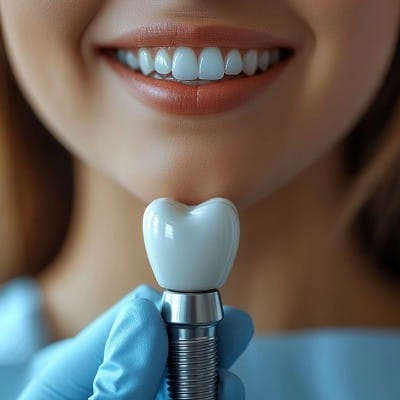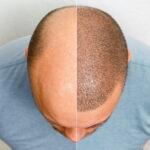
One excellent approach to restoring missing teeth is dental implants. Moreover, they restore appearance and use by substituting a natural-looking substitute that lasts. However, many patients suffer from the loss while considering this treatment. Hence, its jaw may weaken or break down over time. Therefore, it happens when a tooth is gone for a protracted period or due to a condition like gum disease. So, it makes putting in a treatment challenging. Therefore, they ask What Options Do I Have for Dental Implants If I Have Bone Loss? We will discuss it in this blog.
Why Is Bone Important for Dental Implants?
Directly placed dental implants into the jawbone function like the root of a genuine tooth. Enough strong area is needed to sustain the implant if it is to be successful. The implant requires a firm basis if it is to correctly merge with them. This is known as osseointegration and occurs as the cells develop around the implant and secure it.
Standard treatment may not be feasible, though, if the jawbone is not thick enough or tall enough without extra work. This loss is mainly brought on by:
- Gradual tooth loss.
- Gum disease, sometimes known as periodontal disease, compromises the jawbone.
- Using dentures long-term.
What Options Do I Have for Dental Implants If I Have Bone Loss?
Modern treatment allows you to still have this treatment even after losing them. Modern tools and approaches enable the fixing or avoiding of the issue thereby enabling the use of implants. Hence, the following are the Options for Dental Implants If I Have Bone Loss.
Bone Grafting
One of the most often used approaches to assist those who have lost bones is restoration. This operation adds the jaw so that future implants may be positioned firmly.
The grafting is the movement of the part from one area of your body to another, from a donor, or man-made materials to sites in your jaw where it has been lost. Over time, the graft will merge with your own bone, increasing the size and strength of your jawbone so it may support an implant.
Sinus Lift (Sinus Augmentation)
Those who have lost these in their upper mouth especially where the molars and premolars are—may find the finest solution in a sinus lift. A sinus lift adds them to the tiny upper mouth close to the sinuses.
The operator meticulously raises the sinus membrane during a sinus lift and places a transplant into the void. This tallness and thickening of the upper jaw allow implants in the molar region.
All-on-4 Implants
The All-on–4 implant technique is a whole fresh option for those who have lost more and wish to reconstruct their whole arch. This approach allows merely four implants placed in a way that maximizes the previously existing of them to support a complete set of teeth.
The All-on-4 technique sets two implants at an angle in the rear to maximize the already-present and two implants straight in the front of the mouth, which is often denser. This approach often provides immediate support and is helpful in place of grafting.
Zygomatic Implants
Those who have lost a lot of bone, particularly in the upper jaw can also obtain zygomatic implants. Usually, dentists place joint implants into the jawbone. Conversely, zygomatic implants are fixed to the cheekbone (zygoma).
Usually speaking, the cheek area is thicker than the upper jaw. Zygomatic implants can therefore keep tooth restorations in place without the necessity of grafting. Longer implants placed in the cheekbone instead of the jawbone help to meet the demand for sufficient repair.
Mini Dental Implants
Those who have lost part or all of them might prefer little procedure. Since these implants are thinner than standard ones, they require less bone for proper placement.
Mini implants are less costly and speedier, as they may be placed without the necessity of the grafts. They usually replace tiny teeth or hold dentures in place.
How to Determine the Best Option for You?
See a qualified dentist or oral surgeon first if you desire this treatment but are concerned about this loss. Dentists will check your teeth density and general dental state using imaging techniques, including X-rays and CT scans. Based on your particular circumstances, they will advise you which therapy would be most suitable for you.
Final Thoughts:
Though it can make acquiring dental implants more difficult, not having enough bone does not prevent one from obtaining them. New treatments include bone transplants, All-on-4 implants, and zygomatic implants to let those who have lost bone still have the smile they have always desired.
Enfield Royal Clinic PK is eager to help you learn more about your dental implant options. Contact us right now to arrange a meeting and discover which option would be best for you.







